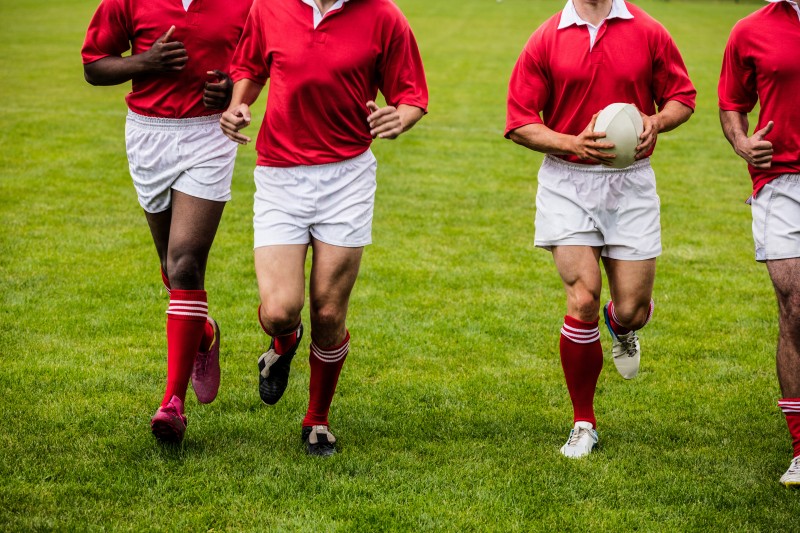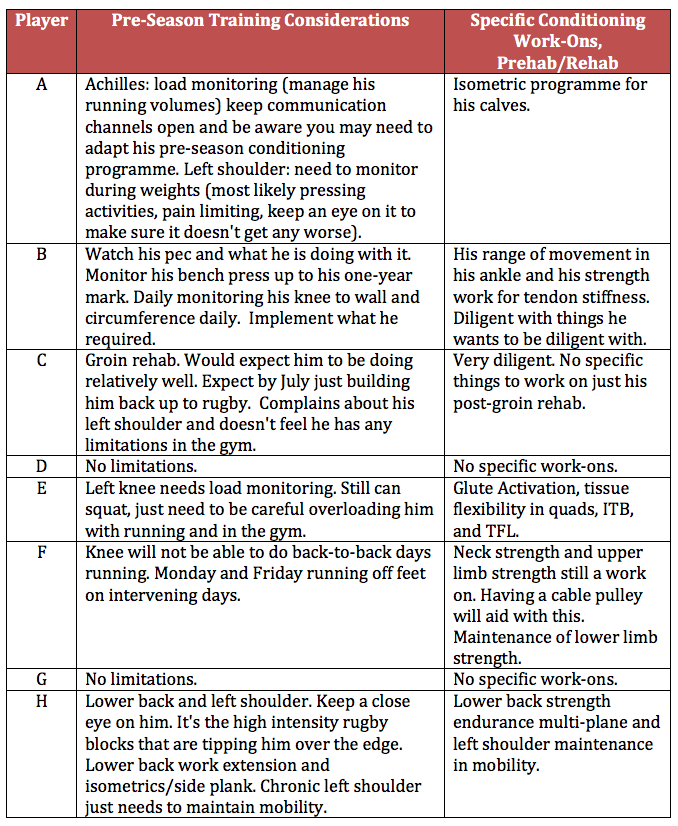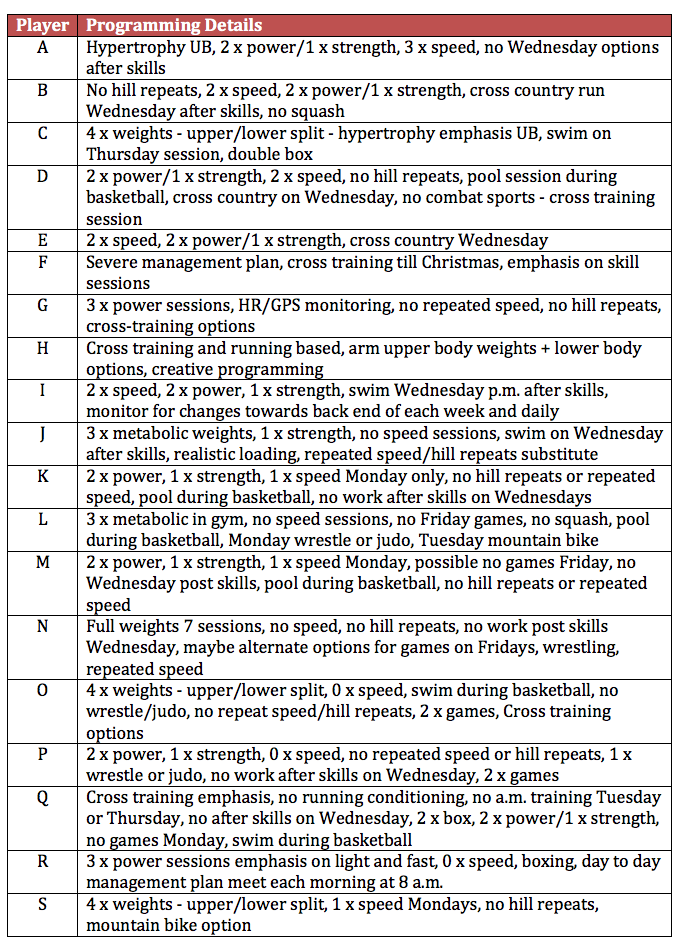
The first and most important role of the strength and conditioning coach, irrespective of the sport they are involved in, is to program to minimize the risk and/or the severity of an injury taking place.
Secondarily to that role is to improve performance, but since all weight training for most sports is general in nature, one could suggest that we should invest more time in the first part of the strength and conditioning equation than what is common in most programs around the world.
RECENT: The ABCs of My Life in Strength, Conditioning, and Fitness
An article came across my desk the other day, which greatly re-enforced my ideas in this matter for the sport that I am most associated with, rugby. The paper, “Injury-prevention priorities according to playing position in professional rugby union players,” authored by JHM Brooks and SPT Kemp. The paper looked across four seasons of games, with 899 players across 14 English Premiership clubs, during which time 2,484 injuries occurred.
This was also supported by Dr. Nic Gill, strength and conditioning coach of the New Zealand All Blacks, speaking at a PLAE symposium in Sydney recently when he said that each rugby test match usually generated four injuries across both teams involved that prevented players from playing the following week at least.
In the article/study in question, an injury was defined as, “any injury that prevents a player from taking a full part in all training and match play activities typically planned for that day for a period of greater than 24 hours from midnight at the end of the day the injury was sustained.” (Br J Sports Med 2011;45:765–775. doi:10.1136/bjsm.2009.066985)
The aspect that sets this paper apart from most that I had read on the subject is that it breaks down injuries via position and the information is quite startling. When I have put my CARE programs in place the exercise selection, although having athlete selection choices, is quite generic.

Wavebreak Media Ltd © 123rf.com
Now armed with new information, I can ensure that all players will be doing additional work for shoulder, knee, and ankle, since there appears to be little difference between positions for injuries to occur in these areas, as well as neck strengthening to aid in the minimization and severity of concussions across all positions.
Apart from the four areas mentioned in the previous paragraph, the authors of the study identify nine other areas of the body. These were all based around the criteria of greater than 150 days of player absences from 1,000 hours of participation in the sport of rugby. Some areas of the body are impossible to train, i.e., the head and to a lesser degree, the hand, although grip strength is vital for all positions, injuries such as lacerations to the head and finger dislocations are just part of the game. Also since these may well be caused by flawed techniques in tackling, there is certainly a case for alignment between the strength and conditioning coach and the skills coaches to develop concurrent programs that can be sued in the gym at various times throughout sessions.
To summarise the other body areas of concern as listed in the study:
- Chest – Loosehead prop and fullbacks
- Lumbar Spine – Tighthead prop and halfbacks
- Groin/Hip and Buttocks – Fullbacks, but personally I would include all kickers in this grouping for additional prehab work
- Thigh (Quad and Hamstring) – Blindside flanker and all backs except the halfback
- Lower Leg (Calves) – Tighthead prop, hooker, and centres
I think that it is important for all strength and conditioning coaches to develop programs for injury prevention with the medical staff and assess each player in regards to positional needs, injury history, training age, and game time to come up with a needs-based program that forms the core of the program. Looking at trends of injuries across your squad and also the potentiality of new injuries due to rule changes and also personnel changes, where some players may have increased playing exposure, is necessary to design programs to meet the needs of the player and the team.
As it is with all programming, I believe this to be a multi-personnel assignment and not just the strength and conditioning coach in the isolation of their own silo. It involves initially the following:
- Discussing these details with each player and get their input into the development of their program within the context of the team environment (for me, this is the Holy Grail of team sport training).
- Discussing these details with the medical staff and get their input and buy-in for what the physical preparation staff are intending to implement and how they can add value and expertise into the program.
- Discussing these details with the head coach and position coaches and get their perspective on what physical aspects need to be addressed with each player.
And ongoing:
- Monthly meetings with players to ensure the program is on track or elements need to be changed or trialed differently.
- Daily and weekly meetings with coaching, medical, and physical preparation staff to ensure the programming and planning for each player and the team is on track.
After all these discussions, you will come up with a plan of programming similar to the one below:

The next phase after this input is the development of each player’s plan:

I certainly have been guilty in the past of just tacking prehab onto the end of a gym session, but I now feel that the area is so important that it deserves its own place in the training day/week to ensure that it is completed with the same diligence as the performance movements.
Each movement will have a variety of sets and reps schemes as determined between the medical and strength and conditioning staff, and ideally, you will have at least one physiotherapist in the weight room with you at all times. This is essential, as I have been in some programs where you never see the physio in the weight room, but the best programs are certainly when they are working synergistically with you and the players. I think it builds quite a lot of confidence from the players seeing the physios in the weight room, so there is far less of that “us versus them” mentality that I have seen pervade some programs.












7 Comments